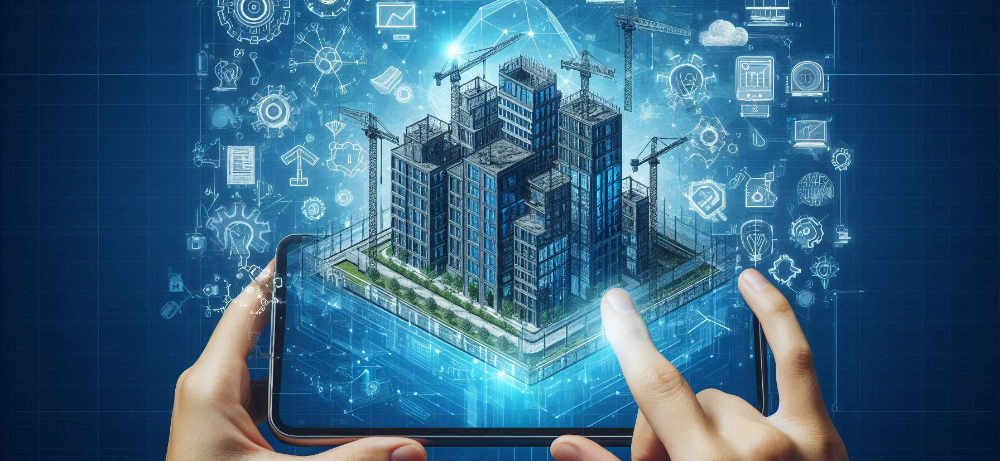Digital twin
Contents |
[edit] Introduction
The term ‘digital twin’ refers to a virtual model or replica of assets, processes, systems, and other entities.
The Standard BS ISO/IEC 30173 which was published in 2023 gives the definition of a Digital Twin as: "digital representation of a target entity with data connections that enable convergence between the physical and digital states at an appropriate rate of synchronisation.'
A digital representation being the digital version of the target entity. Depending on the subject, the way it is represented may change. It may be useful to represent the shape of a component graphically (i.e. a 3D model), but a process or system may need to be represented more conceptually (e.g. as a diagram or a model notation). Much like with Building Information Modelling (BIM), digital twins aren’t about 3D models, they are about the exchange of pertinent information.
The target entity, is the subject of the digital twin. The standard describes these as being ‘real’ things like components, assets, systems and processes. The subject is then observed through data connections like sensors.
Convergence is the act of coming together. In this instance, convergence can be achieved in three different ways:
- The digital representation changes to reflect the target entity (e.g. a component, which is being tracked, is moved. Once in its new position, its location is updated with new coordinates).
- The target entity changes to reflect the digital representation (e.g. someone sets a thermostat which is monitoring a living room. The thermostat triggers the room to warm up).
- Both the digital representation and target entity change to meet in the middle (e.g. a complex algorithm behind a series of interconnected digital twins may influence several entities and representations concurrently).
Appropriate rate of synchronisation is the idea that convergence occurs as often as needed. For cases relating to life safety, near real-time may be a requirement. For other use cases, this convergence might happen less frequently.
[edit] Background
A guidance note published by the Smart Cities Council in April 2020 states: 'The term ‘Digital Twin’ is commonly associated with smart manufacturing and Industry 4.0, with the ‘twin’ part dating back at least to the 1960s. As part of the Apollo program, NASA created ‘twins’ of the Command Module, Lunar Module and Lunar Rover. The twins all stayed on the ground but were used extensively for maintenance, support and troubleshooting.'
The term has gained in popularity with the rise of the Internet of Things (IoT) which is the application of unique identifiers to physical objects that enables them to be connected to a network allowing the transfer of data to and from those objects.
Digital twins can be used as a means of optimising the operation and maintenance of physical assets, systems and processes. By analysing the virtual model, lessons can be learnt and opportunities exploited in the real physical twin.
Digital simulations can be undertaken that can help prevent actual problems. Artificial intelligence (AI) and analytics can update the digital twin as its physical twin changes. Smart components connected to a cloud-based system can gather data using sensors which allows analysis of real-time status and comparisons with historical data.
According to the Gemini Principles published by the Centre for Digital Built Britain in December 2018, a digital twin is: 'A realistic digital representation of something physical. What distinguishes a digital twin from any other digital model is its connection to the physical twin.'
For more information see: Defining the digital twin: seven essential steps.
[edit] National Digital Twin
The National Digital Twin (NDT) is '...an ecosystem of digital twins that are connected by securely-shared data ...a national resource for improving the performance, service and value delivered by the UK’s infrastructure, delivering benefits to society, business, the environment, and the economy.'
National Digital Twin Day was hosted at ICE headquarters in London on Monday 9 September 2019 and brought together key influencers and leaders in digital transformation to bring focus to how digital twins are shaping the future of the built environment.
A Digital Twin Hub was launched by CDBB in March 2020 as part of the National Digital Twin programme. In March 2022, it was announced that the Hub would transfer from the Centre for Digital Built Britain (CDBB) to an industry/catapult partnership at the Connected Places Catapult from 1 April. The Digital Twin Hub said: “The transition of the Hub to the industry/catapult partnership housed at CPC will allow the community to accelerate its growth and address new and exciting project areas across the public and private sectors. It will be an opportunity to reach different people and industry sectors, scale innovation, expand resources and increase knowledge exchange.” Ref https://digitaltwinhub.co.uk/articles/articles/the-centre-for-digital-built-britain-announces-a-new-phase-for-the-digital-twin-hub-at-the-connected-places-catapult-r176/
[edit] Related articles on Designing Buildings
- Artificial intelligence and civil engineering.
- Big data.
- BIM.
- Blockchain.
- Connected digital twins.
- Defining the digital twin: seven essential steps.
- Digital Roads 2025.
- Digital Twins, A BSRIA Topic Guide TG25 2024.
- Engineering Smart Cities.
- Internet of things.
- Interoperability.
- Making the most of big data.
- Open data.
- Smart technology.
- Twin cities.
- What a digital twin could be.
- UsBIM.geotwin
[edit] External links
'Has ISO answered the question "What is a digital twin”? AT Journal issue 150, summer 2024 by Dan Rossiter FCIAT, Built Environment Sector Lead, BSI.
BIM Directory
[edit] Building Information Modelling (BIM)
[edit] Information Requirements
Employer's Information Requirements (EIR)
Organisational Information Requirements (OIR)
Asset Information Requirements (AIR)
[edit] Information Models
Project Information Model (PIM)
[edit] Collaborative Practices
Industry Foundation Classes (IFC)









Comments